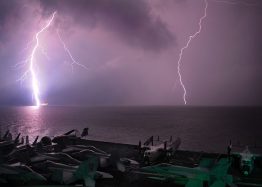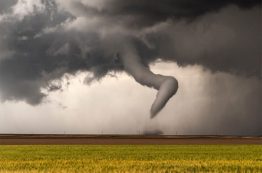2020 was a memorable year for wildfires. Images of burning forests appeared everywhere on social media and attention-grabbing headlines dominated news cycles all over the world. Heading into the 2021 fire season, two big questions loom in everyone’s minds, so we checked in with some fire experts at UW Environment to ask: Are fires getting worse over time? If so, what compounding factors are in place?
Read more »Timing is everything: ShakeAlert comes to Washington May 4
It could happen any time, any day. Multiple seismometers — scientific instruments that measure ground motion — detect a 7.0 magnitude earthquake in Washington, Oregon or California. Seismic waves move fast, but seismometers move faster: The data zips from seismometer to processing center at the speed of light (670,616,629 mph), where algorithms calculate the area and intensity of shaking and sound an emergency warning to phones moments before shaking arrives: Drop.
Read more »UW launches GeoHazards Initiative; names Paros Chair in Seismology and GeoHazards
Leveraging the tectonic laboratory of the Cascadia subduction zone, the University of Washington today announced a new effort to best understand how to study and live with the threats of earthquakes, tsunamis, volcanos, landslides and other seismic hazards. Dubbed the GeoHazards Initiative, the interdisciplinary work aims to develop and promote the adoption of early detection systems both on land and at sea to help prevent the loss of human life and property.
Read more at UW News »Warming temperatures tripled Arctic lightning strikes over the past decade
Lightning strikes in the Arctic tripled from 2010 to 2020, a finding University of Washington researchers attribute to rising temperatures due to human-caused climate change. The results, researchers say, suggest Arctic residents in northern Russia, Canada, Europe and Alaska need to prepare for the danger of more frequent lightning strikes. The study, published March 22 in Geophysical Research Letters, used data from the UW-based World Wide Lightning Location Network to map lightning strikes across the globe from 2010 to 2020.
Read more at UW News »Rating tornado warnings charts a path to improve forecasts
The United States experiences more tornadoes than any other country, with a season that peaks in spring or summer depending on the region. Tornadoes are often deadly, especially in places where buildings can’t withstand high winds. Accurate advanced warnings can save lives. A study from the University of Washington and the National Oceanic and Atmospheric Administration describes a new way to rate and possibly improve tornado warnings.
Read more at UW News »





